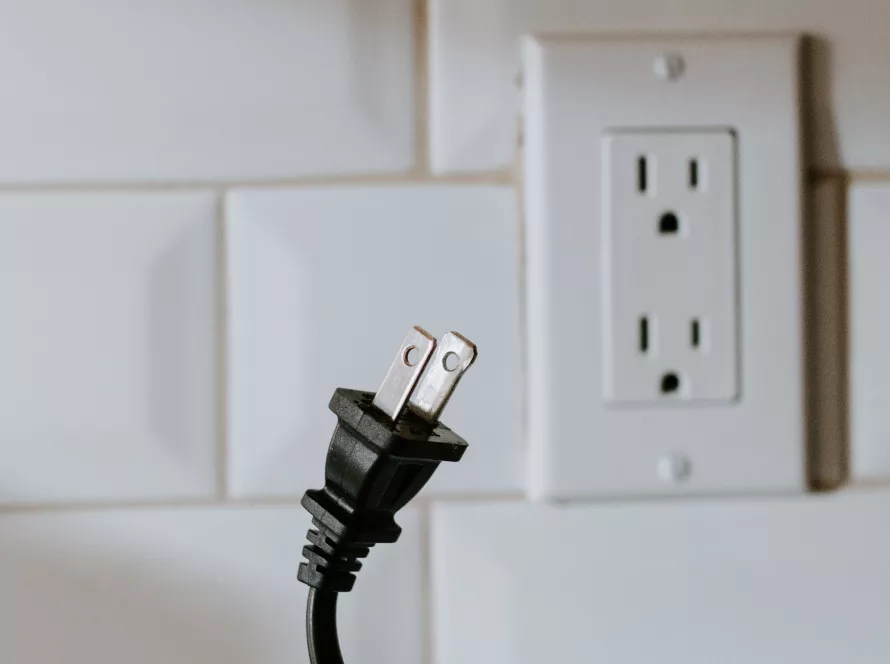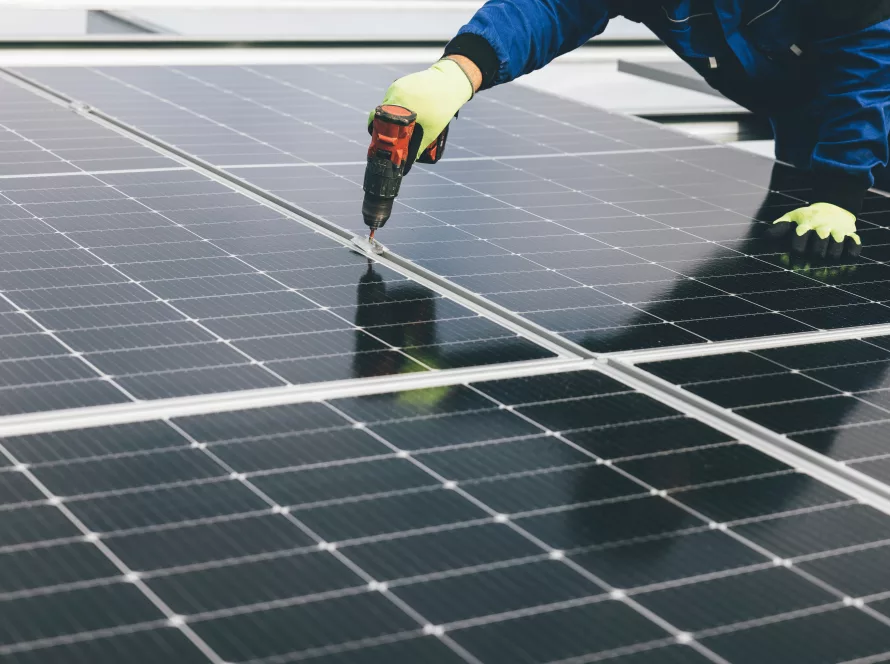Choosing solar power involves making decisions like off-grid or grid-tied, ground mount or roof mount, and polycrystalline panels or monocrystalline. These choices are important because your solar system will last a long time, and you want to make the right decisions.
If you work with a good solar installer, they can help you choose the best options for your situation. But it’s also helpful to do some research. That’s why we’re explaining the four main differences between on-grid and off-grid solar power. This information will assist you in deciding which option is better for your solar project.
Understanding Off-Grid and On-Grid Solar Energy
Off-grid solar energy systems are independent of the utility grid, while on-grid (or grid-tied) systems are connected to it. Your choice between off-grid and on-grid determines how you access electricity, the equipment required for excess energy, your response during grid outages, and how you are billed.
Distinguishing Off-Grid and On-Grid Solar Energy
Difference #1: Access to Electricity
Off-Grid Solar Electricity Access
In off-grid solar systems, you rely entirely on the sun and stored energy in batteries for powering your home or business. Without a connection to the electric grid or a generator, you can access electricity only under two conditions:
1. When the sun is shining, and your solar system is generating electricity.
2. When you draw electricity stored in solar storage devices, like batteries, generated previously by your solar system
Without batteries or a means of energy storage, you may experience reduced or no electricity during cloudy days and complete darkness at night. In an off-grid setup, you won’t have additional electricity beyond what is produced and stored.
On-Grid Solar Electricity Access
Opting for an on-grid solar system ensures continuous access to electricity (except during grid outages), regardless of whether your solar system is generating power or if you have batteries.
During periods of low or no electricity production from your system, you can supplement your needs by drawing energy from the utility grid. This guarantees a consistent power supply for your devices, lights, machines, and other requirements.
Difference #2: Handling Excess Production
Dealing with Excess Production in Off-Grid Solar
The surplus electricity generated by your off-grid solar system depends on factors like system size, your electricity consumption, and usage patterns. Typically, during times when your system produces more electricity than you use, the approach to handling this excess energy relies on your installed equipment.
Off-grid solar setups often generate extra electricity during the day, which is directed to batteries for storage. These stored energy reserves can then be tapped into during periods when the solar system is inactive, such as at night or during cloudy weather.
To align with specific energy goals, systems can be sized to generate ample excess electricity during the day, ensuring continuous coverage for your energy needs throughout the day and night.
However, unpredictable weather poses a challenge. Extended periods of abnormal cloudiness may hinder your system from producing sufficient electricity to charge the batteries fully, impacting your energy needs. While having extra batteries provides reassurance and a stored electricity reserve, it comes with a cost. Acquiring more batteries than necessary could be financially restrictive based on your budget.
Managing Excess Production in On-Grid Solar
Similar to off-grid systems, many opting for on-grid solar installations aim to cover 100% or nearly all of their energy consumption. This objective is achievable with on-grid systems as well.
When your on-grid solar system generates surplus energy, instead of directing it to batteries as in an off-grid system, you can feed it into the grid. In return, you receive compensation for the electricity you contribute to the grid.
Difference #3: Dealing with Power Outages
Power Outages in Off-Grid Systems
In off-grid systems, your solar setup operates independently of the power grid. In the event of severe weather or disruptions that cause a power outage, your solar system continues to function autonomously. During such instances, you experience no changes in your service or access to electricity.
Power Outages in Grid-Tied Systems
Choosing a grid-tied system grants you constant access to electricity whenever needed. However, this connection comes with certain regulations. In the event of a grid outage, if you have a standard grid-tied solar system, you won’t have electricity unless you have a grid-tied system equipped with a battery backup.
Difference #4: Billing for Electricity
Billing in Off-Grid Systems
When your photovoltaic (PV) system operates independently of the grid, you won’t receive a traditional electric bill. Despite the absence of an electric bill, it’s important to note that off-grid systems tend to be pricier due to the additional equipment, such as batteries, required to ensure viability.
Billing in Grid-Tied Systems
Opting for a grid-tied system may still result in minimal charges on your electricity bill, even if your solar system covers 100% of your electricity needs.
One type of charge that may persist is the service fee or delivery charge, imposed on customers for connecting their home or business to the grid. Many utilities charge a flat rate for this fee, unaffected by the amount of electricity consumed.
Another potential charge is demand charges, usually applicable to commercial properties. These charges represent an increased electric rate during your business’s peak demand period, typically the 15-minute span when your electricity usage is at its highest.



